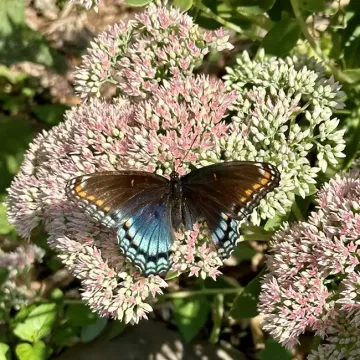Fall-blooming flowers provide vital nectar and pollen for bees, butterflies, and other insects as they prepare for winter. This article will explore some of the best flowers to plant in your garden to beautify your landscape in the fall and support pollinators.
Asters (Asteraceae)
Asters are quintessential fall flowers that burst into bloom when most other flowers have faded. Their star-shaped blooms come in various colors, including purple, blue, pink, and white. Asters attract many pollinators, particularly bees, butterflies, and moths. Because of their long bloom time and late-season appeal, they are essential for providing food in autumn.
Coneflowers (Echinacea)
Coneflowers, particularly the purple coneflower, are a favorite of bees and butterflies. These hardy perennials continue to bloom into the early fall, providing nectar for pollinators. The large central cone attracts bees, while butterflies love to perch on the petals. After blooming, the seed heads also provide food for birds in the later fall and winter.
Snapdragons (Antirrhinum majus)
Snapdragons are popular flowers with unique, dragon-shaped blooms. Although often considered a summer flower, snapdragons can thrive well into the fall, especially in cooler climates. Their bold colors and long bloom time make them attractive to bees and hummingbirds.
Gaillardia (Blanket Flower)
Gaillardia, or blanket flowers, has a long bloom period that stretches into the fall. Its red, yellow, and orange tones attract bees and butterflies. Gaillardia is highly drought-tolerant, making it an excellent choice for water-wise gardening.
Goldenrod (Solidago)
Goldenrod is often unfairly blamed for causing allergies, but this native plant is a goldmine for pollinators. It blooms in late summer and fall, offering a last feast for bees, butterflies, and other beneficial insects. Goldenrod's tall, golden-yellow plumes brighten up any fall landscape.
Sedum (Hylotelephium telephium)
Sedum, or stonecrop, blooms in late summer and fall. Flat-topped pink, red, or white flower clusters are perfect landing platforms for butterflies and bees. Sedum is highly drought-resistant, making it an excellent choice for fall gardens in drier climates.
Joe-Pye Weed (Eutrochium purpureum)
Joe-Pye Weed is a tall, native perennial with fluffy, pink flowers that bloom in late summer through the fall. It is a favorite of butterflies, especially monarchs, during their migration. This flower is perfect for adding height to a garden and attracting beneficial pollinators.
Anise Hyssop (Agastache foeniculum)
Anise Hyssop is a fragrant herb that flowers in late summer and fall. Its aromatic leaves smell like licorice. The flowers attract bees, butterflies, and even hummingbirds.
Russian Sage (Perovskia atriplicifolia): Known for its long-lasting, purple-blue spikes, Russian sage attracts bees and other pollinators.
New England Aster (Symphyotrichum novae-angliae): A native aster variety, New England Asters bloom profusely in late summer and early fall, attracting bees and butterflies.
Turtlehead (Chelone lyonii): This late-blooming perennial with snapdragon-like flowers attracts hummingbirds and bumblebees in the fall.
Japanese Anemone (Anemone hupehensis): These delicate white or pink blooms appear late in the season and attract various pollinators.

